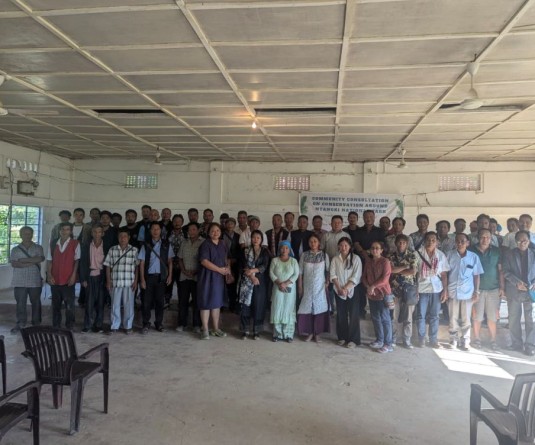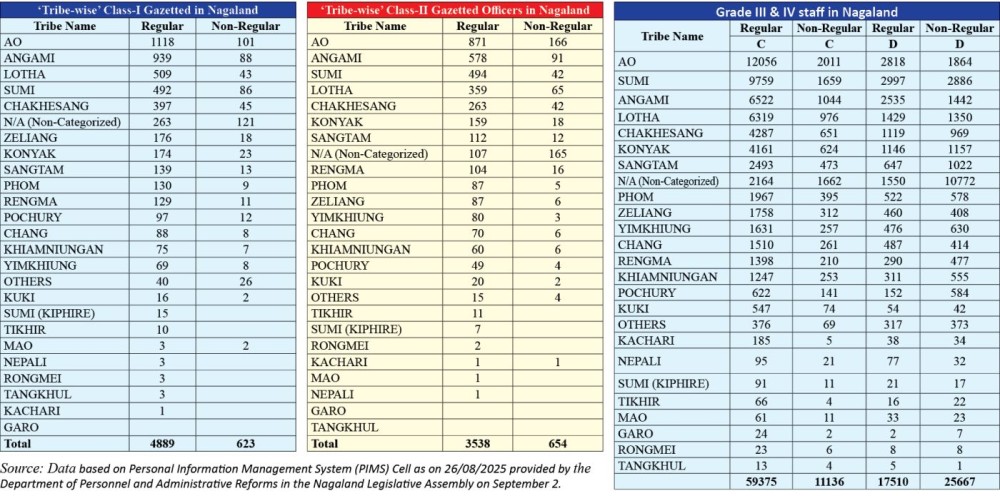
Morung Express News
Kohima | September 2
Amid the ongoing demand over the review of reservation policy in Nagaland, the Personnel Information Management System (PIMS) data presented in the State Assembly have revealed data showing significant disparities in tribal representation across various service classes.
As on August 26, 2025, the PIMS, maintained by the Department of Personnel and Administrative Reforms (DP\&AR) Nagaland, informed that a total of 1,23,392 employees were under the State Government’s payroll.
The report, presented on September 2 in the Nagaland Legislative Assembly, was a response to a starred question regarding the number of employees posed by MLA Kuzholuzo Nienu.
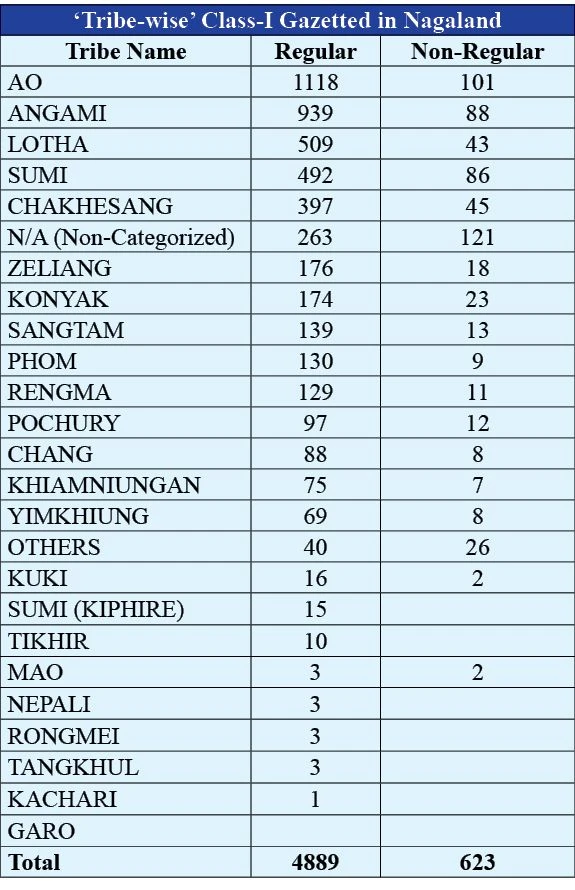
Categories of employees
Of the 1.23 lakh total workforce, 85,312 are classified as regular employees, while 38,080 are non-regular.
Further, a total of 5,512 employees were Class-I Gazetted officers, out of which 4,889 were designated as regular while 623 were non-regular. Group-B (Class-II Gazetted) had 4,192 employees – 3,538 regular and 654 non-regular employees.
The Group-C (Grade III) and Group-D (Grade IV) employees make up the bulk of the workforce, with 59,375 regular and 11,136 non-regular employees in Group-C, and 17,510 regular and 25,667 non-regular employees in Group-D. Altogether, there were 76,885 regular Grade III and Grade IV employees against 36,803 non-regulars.
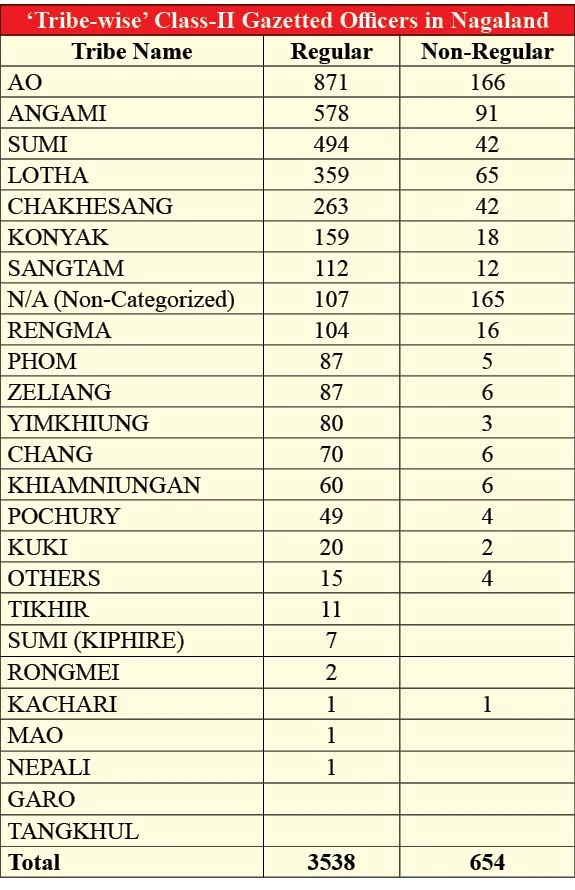
Skewed representation
Meanwhile, the PIMS data reflected a stark contrast in the number of employees from different tribes, with a huge concentration of government posts among a few tribes.
At the top was the Ao tribe, which had the highest number of Class-I Gazetted regular employees (1,118) and Class-II Gazetted regular employees (871). They also lead in the largest service category, Grade III, with 12,056 regular employees. Following closely was Angami with 939 regular Class-I Gazetted and 578 Class-II Gazetted employees. There were also 6,522 and 2,535 regular Grade III and IV staff from the community.
In terms of Class-I Gazetted, Lothas were third at 509, followed by Sumi (492) and Chakhesang (397). The Sumi tribe pipped the Lothas for Class-II Gazetted regulars at 494 and 359 employees respectively, followed by Chakhesang at 263.
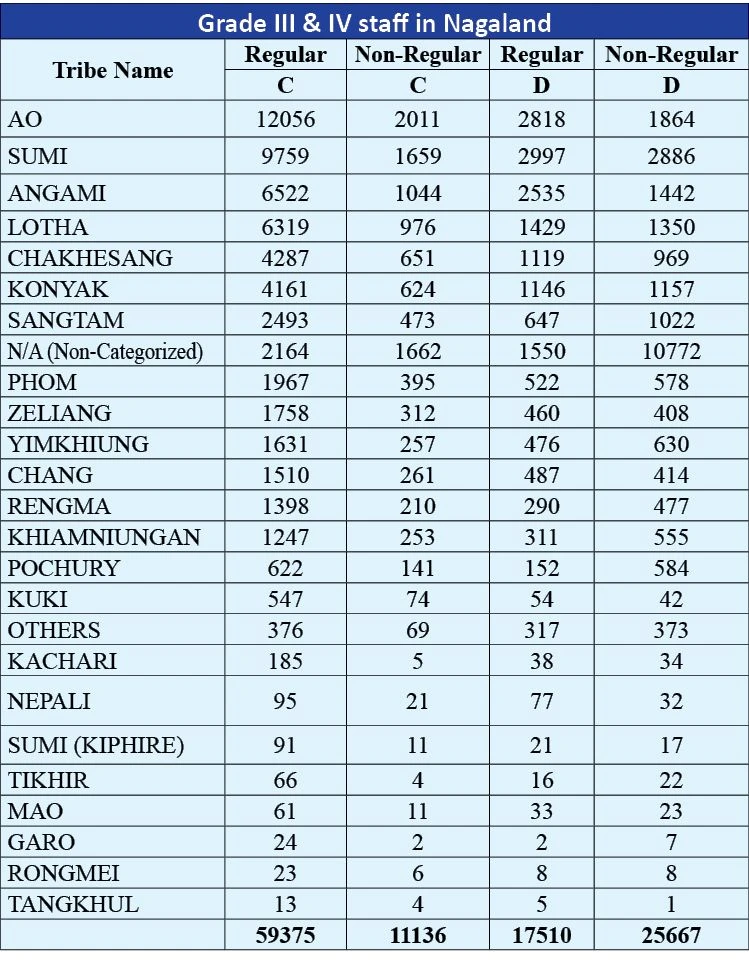
At the other end of the spectrum, some tribes have minimal or no representation. For instance, the Garo tribe has no Class-I Gazetted job holder, while there were just two regular Grade III employees. Even in Grades III and IV, the Garos had just 35 employees, inclusive of both regular and non-regulars. The Kacharis also had just one representation each in the Class-I and Class-II Gazetted category, though there were 262 in the other two categories.
Among the recognised Naga tribes in the State, the Tikhirs had the lowest total at 129 employees, comprising just 10 Class-I and 11 Class-II Gazetted posts, and 108 Grade III and IV employees. The Sumis from Kiphire followed with a total of 162 employees, including 15 Class-I and 7 Class-II Gazetted posts. The Pochury tribe had the third lowest at a total of 1,661 employees, with 162 Class-I and Class-II Gazetted officers. The Khiamniungan tribe were next with a total of 2,375 employees, followed by the Rengmas at 2,495.


